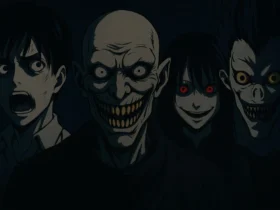Some days, you just can’t get off the couch. The dishes pile up, texts go unanswered, and even small tasks feel impossible. You call it lazy. You feel guilty. But what if you’re wrong about what’s really going on?
A lot of people think of anxiety as fast breathing, racing thoughts, or public panic. But anxiety can hide. It can flatten you like exhaustion, numb you like disinterest, or make you feel stuck without any real explanation. If you’ve been wondering why your motivation suddenly disappears, it might not be about laziness at all. Let’s talk about what anxiety looks like when it doesn’t look like anxiety—and what you can actually do about it.
When “Lazy” Looks More Like Survival Mode
You’re scrolling your phone in bed. You’ve got a full to-do list, but your brain feels heavy and slow. You beat yourself up for being unproductive. This is what anxiety can look like when it wears a different face.
For some, anxiety doesn’t ramp up—it shuts down. Instead of fight or flight, your body goes into freeze. You feel tired for no reason. You start canceling plans, skipping meals, putting off things you normally don’t think twice about. It’s not because you don’t care. It’s because your brain feels like it’s running a marathon in the background, even if the outside looks still.
There’s a real biological reason for this. When your nervous system stays on high alert, your body has to work overtime to regulate itself. Over time, that leaves you feeling drained, foggy, and overwhelmed. It’s like your body’s trying to conserve energy by forcing you to shut everything else down.
The Lie We Tell Ourselves About Motivation
We grow up hearing things like “Just push through,” “You’re being dramatic,” or “You have no reason to feel like this.” That teaches us to ignore early signs of burnout or anxiety. We assume that if we’re not panicking, we’re fine. But emotional numbness, mental fatigue, and lack of focus are all red flags too.
The problem is, anxiety that shows up this way feels a lot like apathy. You stop enjoying things. You find yourself putting off simple tasks. You may even wonder if you’re just lazy. But those “lazy” days often follow intense periods of stress, change, or worry that your brain hasn’t fully processed. You’re not lazy—you’re maxed out.
Some people also find themselves avoiding tasks that aren’t even hard. They just feel like too much. That’s because anxiety isn’t always about fear—it can be about your brain feeling unsafe, overstimulated, or stuck in loops of what-ifs you can’t name. In therapy for people with Autism, clinicians often describe similar shutdown responses—not as laziness, but as the brain’s way of coping with overload.
You’re Not Broken—You’re Exhausted From Hiding It
One of the hardest things about anxiety is how invisible it can be. You might still go to work, post on social media, laugh at a meme. But then you get home and everything crashes. That version of anxiety—the quiet one—is just as real.
You start finding ways to cope. Maybe you sleep more, snack constantly, or rewatch the same show over and over. Maybe you don’t do anything at all, and then feel even worse about it. This cycle feeds on itself: anxiety wears you down, and then you beat yourself up for being worn down. And around it goes.
The guilt is often louder than the actual symptoms. That’s what makes this kind of anxiety so easy to miss. You’re not crying. You’re not shaking. You just feel… nothing. Or maybe you feel everything, but you can’t explain any of it.
Where Treatment Gets Misunderstood—And What Actually Works
A lot of people with these symptoms don’t reach out for help because they don’t think they “qualify.” They don’t look anxious. They’re not having panic attacks. But here’s the thing: anxiety has many faces, and this low-energy, stuck version deserves support too.
Mental health help doesn’t have to mean years of talk therapy or loading up on medications. There are more options than most people realize. In-person support can be great, but virtual therapy has made it easier to get started—especially for people who find it hard to leave the house or make phone calls.
If traditional routes haven’t worked, there’s another option that’s getting a lot of attention for people with stubborn, non-obvious anxiety: TMS in Houston, NYC or anywhere in between. This non-invasive treatment uses targeted stimulation to help the brain reset patterns linked to depression and anxiety. It doesn’t involve medication, and it can be done in short sessions over several weeks. It’s especially helpful for people who feel stuck in mental fog, low energy, or emotional shutdown—when nothing else seems to help.
How to Tell If It’s Time to Ask for Help
Here’s a question to ask yourself: Have I been feeling “off” for more than a few days? If your low-energy “lazy” moods are happening more often, lasting longer, or making it hard to do basic things, that’s not something to ignore. You don’t need to wait until it gets worse. You don’t have to hit rock bottom to qualify for support.














